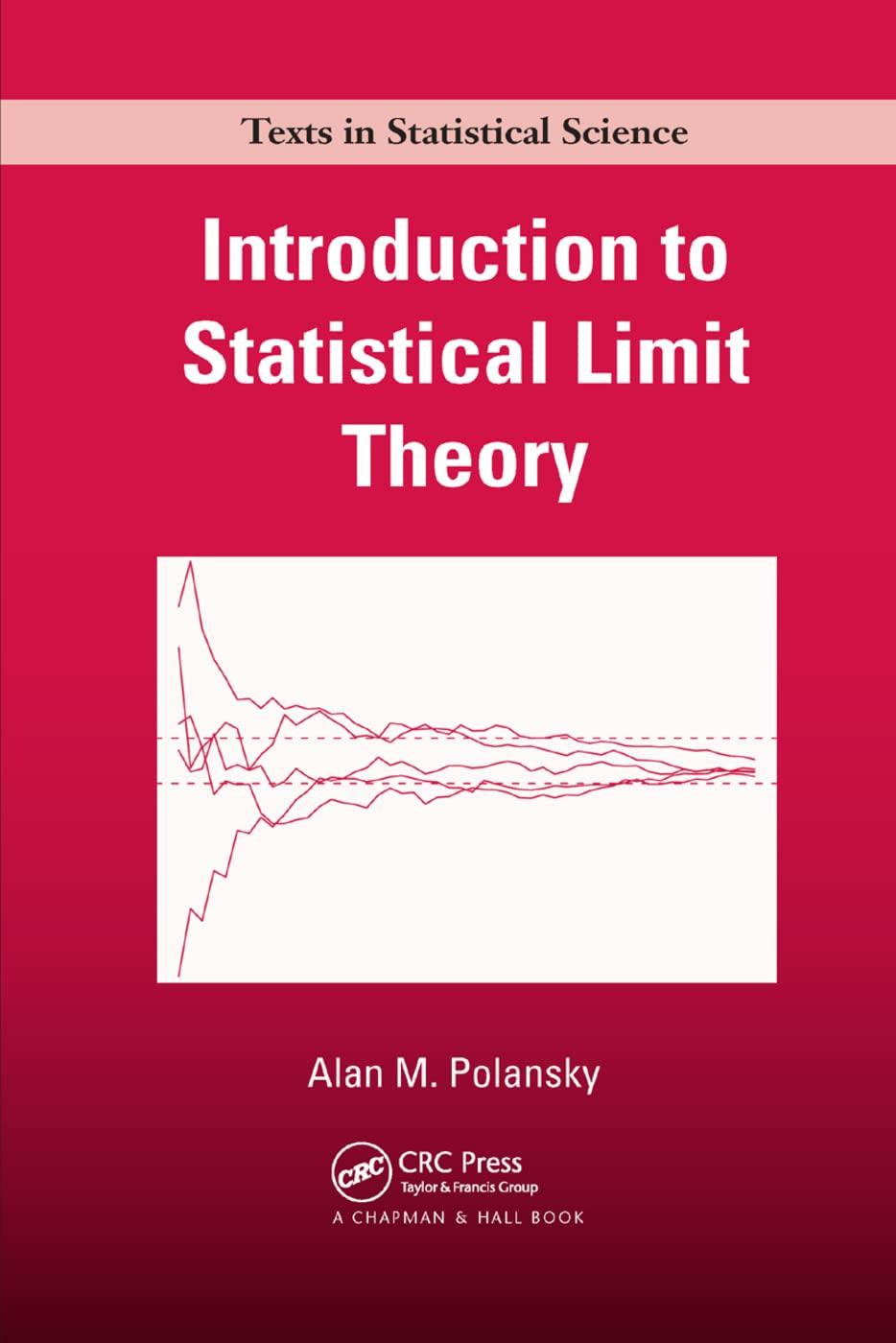Let (left{X_{n}ight}_{n=1}^{infty}) and (left{Y_{n}ight}_{n=1}^{infty}) be sequences of random variables where (X_{n}) has a (mathrm{N}left(mu_{n}, sigma_{n}^{2}ight)) distribution and
Question:
Let \(\left\{X_{n}ight\}_{n=1}^{\infty}\) and \(\left\{Y_{n}ight\}_{n=1}^{\infty}\) be sequences of random variables where \(X_{n}\) has a \(\mathrm{N}\left(\mu_{n}, \sigma_{n}^{2}ight)\) distribution and \(Y_{n}\) has a \(\mathrm{N}\left(u_{n}, \tau_{n}^{2}ight)\) and \(u_{n} ightarrow u\) as \(n ightarrow \infty\) for some real numbers \(\mu\) and \(u\). Assume that \(\sigma_{n} ightarrow \sigma\) and \(\tau_{n} ightarrow \tau\) as \(n ightarrow \infty\) for some positive real numbers \(\sigma\) and \(\tau\), and that \(X_{n}\) and \(Y_{n}\) are independent for all \(n \in \mathbb{N}\). Let \(v_{1}\) and \(v_{2}\) be arbitrary real numbers. Then it follows that \(v_{1} X_{n}+v_{2} Y_{n}\) has a \(\mathrm{N}\left(v_{1} \mu_{n}+v_{2} u_{n}, v_{1}^{2} \sigma_{n}^{2}+v_{2} \tau_{n}^{2}ight)\) distribution for all \(n \in \mathbb{N}\). Similarly \(v_{1} X+v_{2} Y\) has a \(\mathrm{N}\left(v_{1} \mu+v_{2} u, v_{1}^{2} \sigma^{2}+v_{2} \tau^{2}ight)\) distribution. Provide the details for the argument that \(v_{1} X_{n}+v_{2} Y_{n} \xrightarrow{d} v_{1} X+v_{2} Y\) as \(n ightarrow \infty\) for all \(v_{1} \in \mathbb{R}\) and \(v_{2} \in \mathbb{R}\). In particular, consider the cases where \(v_{1}=0\) and \(v_{2} eq 0, v_{1} eq 0\) and \(v_{2}=0\), and finally \(v_{1}=v_{2}=0\).
Step by Step Answer:






